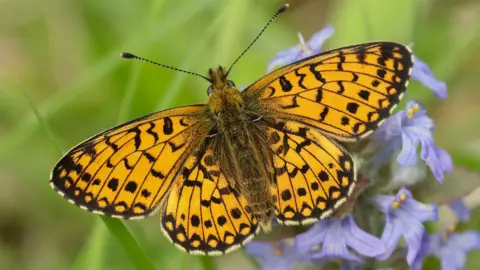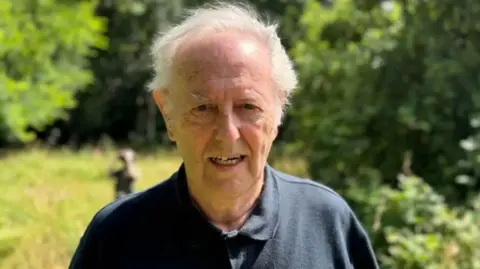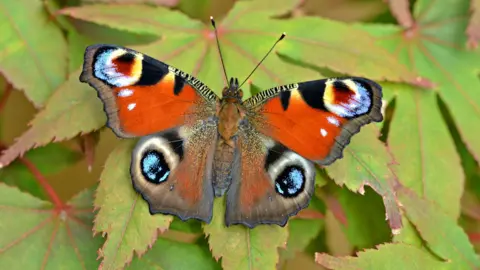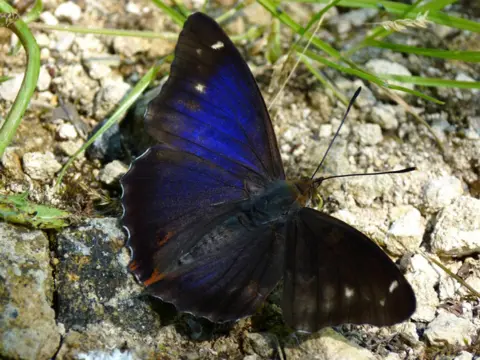Charity hopes ban will boost butterfly population
 PA Media
PA MediaA butterfly charity hopes a government ban on certain pesticides could reverse a significant decline in populations.
The Butterfly Conservation recorded a 40% fall in butterflies in Derbyshire last year, from 110,425 in 2023 to 65,268.
National figures show more than half of the UK's butterfly species have populations in long-term decline - 31 of 59 species have had a reduction in numbers since 1976, when monitoring began
Ken Orpe, who runs the East Midlands branch of the Butterfly Conservation, told the BBC: "Butterflies are an indication of the health of our countryside."

Mr Orpe said climate change and habitat loss are big factors in declining populations.
But he added neonicotinoids, a type of pesticide, are the "biggest enemy" of butterflies and welcomed the government issuing a widespread ban on the practice, which he hopes will increase numbers.
Neonicotinoids are the most widely-used insecticides globally.
They are used on more than 140 crop varieties to control a variety of pests, especially sap-feeding insects.
Environmental groups have said these are highly toxic to pollinators such as bees and butterflies.
"If you spray the crops and the butterflies are attracted to the nectar, as soon as they take in the chemical, they are dead," Mr Orpe said.
"[The ban] should make a big difference but we'll know better in the middle of the year."
 PA Media
PA MediaA total of 350 volunteers were out across Derbyshire on Tuesday counting butterflies,
However, Mr Orpe said it is still too early in the year to gauge if the numbers are up or down yet.
"The peacock is the largest garden butterfly people spotted - we had a dozen at one site but it was one of the only species that did well last year," he said.
"The rest of them did terrible but it's not all bad news because of climate change, there are some new species moving in to the county.
"We have had nine new species since 1995 move to Derbyshire which have moved up from the south.
"I used to have to go to Sussex or Hampshire to see the Purple Emperor but now we get them here."
 Butterfly Conservation
Butterfly ConservationFollow BBC Derby on Facebook, on X, or on Instagram. Send your story ideas to [email protected] or via WhatsApp on 0808 100 2210.
